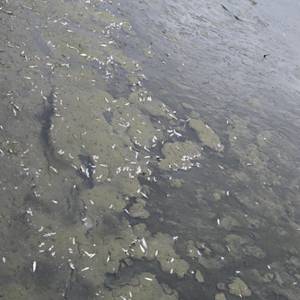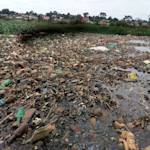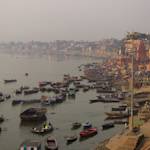Degradation of Lake Victoria
2018 • Lake Victoria, Kenya
“The Lake Victoria Basin is incredibly rich in unique species found nowhere else on earth, yet its biodiversity is being decimated.” — Will Darwall, the head of IUCN’s Freshwater Biodiversity Unit Lake Victoria, the world's second-largest freshwater lake, has been completely transformed by agricultural pollution and invasive species including the water hyacinth (Pontederia crassipes) and Nile Perch (Lates neloticus). Hundreds of species of endemic Cichlid fish have disappeared completely in the last fifty years. Many more endemic species, some of which have yet to be scientifically studied, are also at risk for extinction, threatened primarily by high levels of heavy metals, agricultural chemicals, and raw sewage present in the lake water, as well as by ecological disturbance from introduced species.
Victor Kiprop, "Concerns over loss of habitat and fish species in Lake Victoria," The East African, 9 May 2018, https://www.theeastafrican.co.ke/tea/science-health/concerns-over-loss-of-habitat-and-fish-species-in-lake-victoria-1393272 Additional source: "Freshwater biodiversity in the Lake Victoria Basin", edited by C. Sayer, Laura Máiz-Tomé, and W.R.T. Darwall (Cambridge, UK: IUCN, 2018), https://portals.iucn.org/library/sites/library/files/documents/RL-2018-002-En.pdf
Image: MDK-MUSO, CC BY-SA 4.0 via Wikimedia Commons


Learn about Maya Lin’s fifth and final memorial: a multi-platform science based artwork that presents an ecological history of our world - past, present, and future.

Discover ecological histories and stories of former abundance, loss, and recovery on the map of memory.

Learn how we can reduce our emissions and protect and restore species and habitats – around the world.

See how art can help us rethink the problems we face, and give us hope that each one of us can make a difference.

Help make a global memorial something personal and close to home. Share your stories of the natural world.


